Our morning walk took us again into the nearby Wildlife Refuge to hike the Shell Mound Trail.
Shell middens were created by natives over a 3500 year period starting about 6,000 years ago all along the Gulf Coast.
The result was to fortify the mud flats where they lived and fished.
We are climbing the largest remaining shell mound on the central Gulf Coast.
It covers 5 acres and rises 28 feet above sea level, an elevation that provided summer breezes and protection from storm surges.
This mound was once larger than today. In the mid-1900s, prior to ownership by the US Fish and Wildlife Service, much of the mound was carried off in dump trucks to use as fill material and for road construction.
View of the estuary from the top of the mound. you can see the fishing pier on the right.
White pelicans in the distance, a winter resident of Florida.
An osprey flying over. Not sure if it is carrying a really big fish or a bunch of nesting material.
A bench for viewing the activity below.
An artist's depiction of possible fishing methods used by the early coastal inhabitants.
Catfish!
Crab pots exposed by low tide. The crab fishermen have to wait for high tide to check their catch.
The boat ramp leads to mud flats in low tide.
I was very surprised to see this man back his truck right over the mud. It must be more solid than it looks.
But the boat doesn't "float" on mud. Do you see what he is doing?
Yes, he is pushing that boat over the mud to deeper water!
Finally made it and sat to rest.
Not for long though, because the tide is rising.
He starts collecting oysters and puts them in the big plastic buckets he has on the boat.
Apparently this kayaker fisherman plans to launch in the mud too.
Great Egrets and Snowy Egrets congregate on the mud flats.
Cormorants and a Great Blue Heron too...all fishing during low tide.
Walking back to the campground.
Beside the road I can see the sides of the shell mound exposed under the tree roots.
Imagine all the seafood meals that represents.
Back at the campground ramp, another determined fisherman launches his canoe in the mud.
Slow but steady progress. I think I'll wait for high tide!



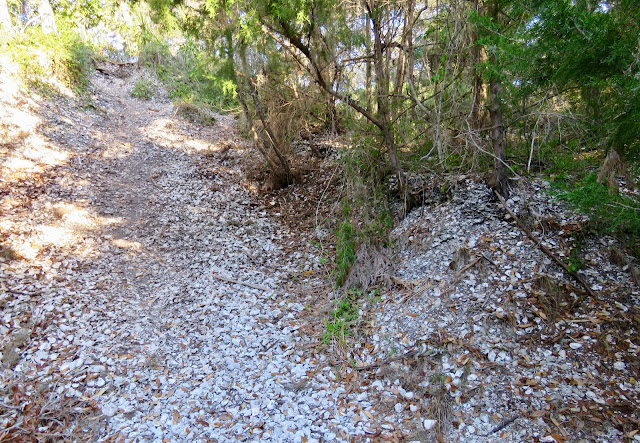

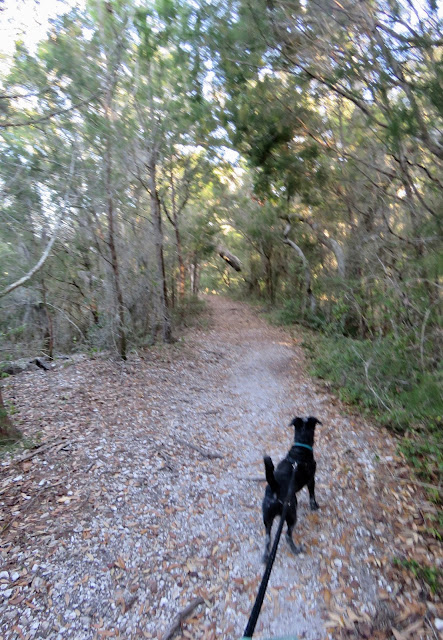











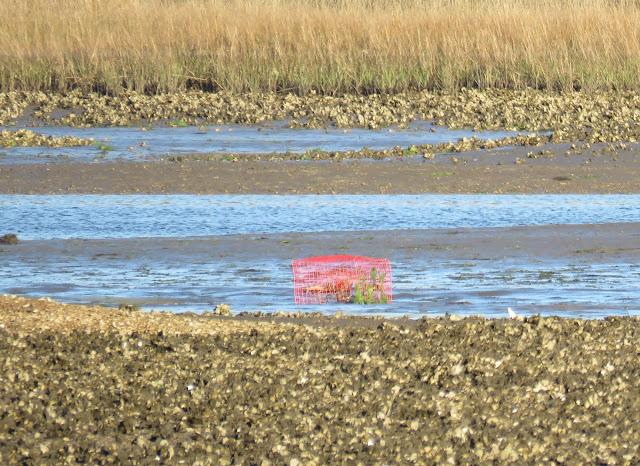
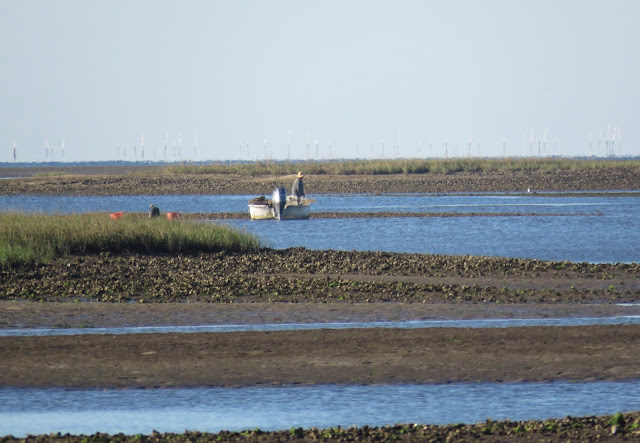








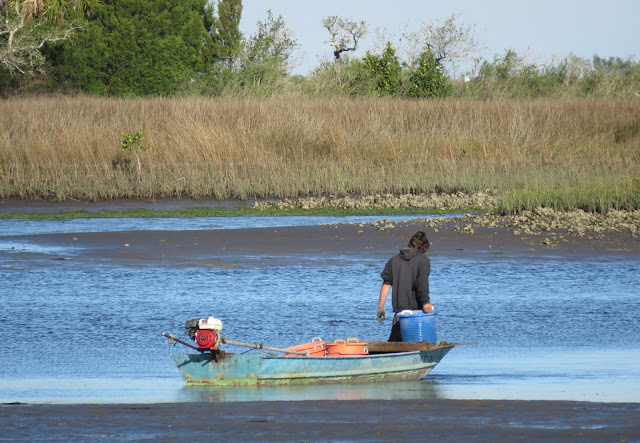












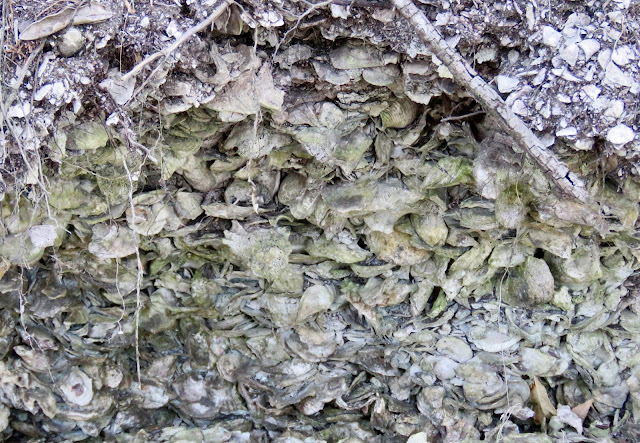




No comments:
Post a Comment